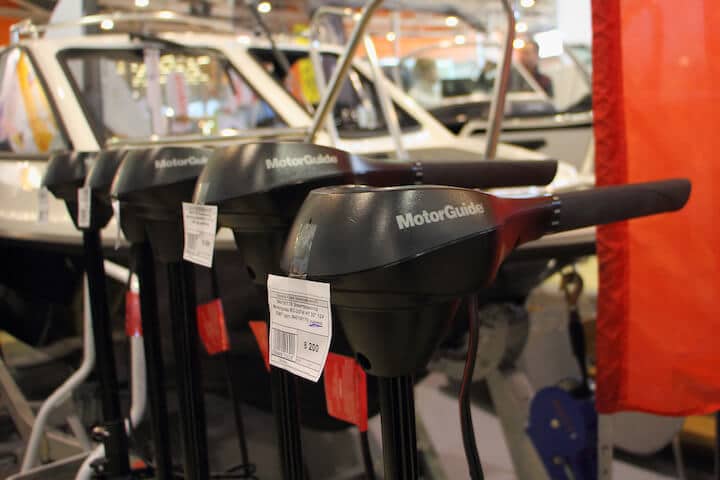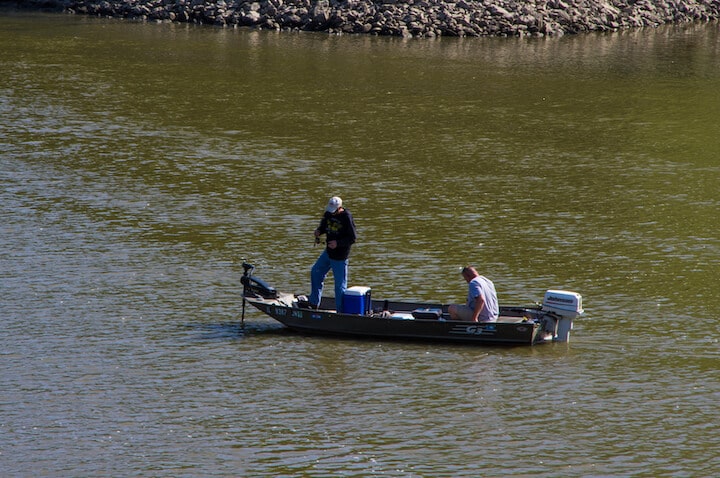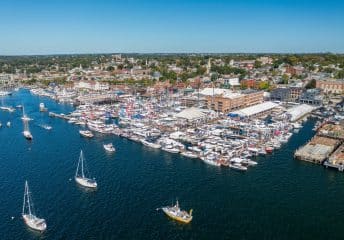Using a Trolling Motor: Sizes, Types & How to Operate
Last Updated on February 11, 2022 by Boatsetter Team
An electric trolling motor is a common feature of many freshwater fishing boats, and may also be found on boats used to fish in shallow saltwater. If you are renting a fishing boat, knowing how to use the trolling motor will greatly enhance your day on the water. If you are not familiar with using the electric motor, ask the owner or captain for a quick walk-through on its controls. It’s especially important to know how to deploy the motor from its stored position, and then to retrieve and stow the motor securely on the deck.
Let’s dig into the basics on using a trolling motor…
Explore All Available Fishing Boat Rentals Near You
What is a Trolling Motor?
While these compact electric motors are commonly called a trolling motor, they can be better described as positioning motors. The primary function of the motor is to position the boat for advantageous angling with more precision than could be accomplished with the main, internal combustion outboard motor, or in water too shallow for the main motor. Of course, the electric motor is also much quieter than the main outboard, and so less likely to spook the fish.
Many anglers use a trolling motor to maneuver in tight spaces where fish may lurk, such as around docks on a shoreline or into gaps in brush or rushes. The trolling motor can also be used to maneuver the boat along underwater structure holding fish, such as a drop-off, a weed line or a clump of submerged brush that can be viewed on a fish locator.

Types of Trolling Motors: Transom vs. Bow Mount
For years, the trolling motor market was dominated by two brands—Minn Kota and MotorGuide. Recently two new players—Lowrance and Garmin—have entered the market with new technology tied to the electronics these companies are known for.
When it comes to different styles of trolling motors, one option is usually mounted on the bow of the boat where it can be controlled by an angler fishing from the forward casting deck. If the boat is underway, the motor is stowed on its bracket on the deck. Once it’s time to fish, the angler uses a handle or cord to lower the motor into the water.
A different style of electric motor is designed to be mounted on the boat’s transom. It may be used as primary propulsion on a very small boat, canoe or kayak, or as an auxiliary positioning/trolling motor placed alongside the primary gasoline-fueled outboard. Some multi-species (walleye) fishing boats are being rigged with a smooth, quiet transom-mount electric motor for trolling in place of a gas-powered “kicker” outboard.
Some trolling motors are designed specifically for use in saltwater. They resist corrosion and are available with a very long shaft so they can be mounted on the higher bow of a saltwater fishing boat. A freshwater trolling motor should never be used in saltwater.

What Size Trolling Motor Do I Need?
Electric motors are rated by “pounds of thrust,” which is simply a static measurement of pushing or pulling power. Current electric motors range in power rating from about 30 pounds of thrust to more than 100 pounds.
So, how much trolling power, or thrust, do you need? Thrust requirements are determined by the size and weight of your boat.
- Minn Kota suggests selecting a trolling motor with at least two pounds of thrust for every 100 pounds of loaded boat weight.
- If you frequently fish in heavy winds or river current consider purchasing a motor with more thrust.
- To keep sticker price down, boat builders often equip new boats with minimal trolling motor power.
- If the power rating seems borderline for the boat’s weight, consider the option of a more-powerful motor. Nobody ever wishes they had less power.
The motor’s thrust rating also determines the battery power required to operate the motor. Deep-cycle 12-volt marine batteries power the electric motor, and the power rating thus is in 12-volt increments. The least-powerful motors require a single 12-volt battery, while the most-powerful 36-volt motors require three 12-volt batteries. More batteries of course add significant weight to the boat and also take up space.
Most new boats are designed with battery storage to accommodate the trolling motor that will typically be installed in the boat. If you are adding a trolling motor to your boat, or considering an upgrade in power, make sure there is room in the boat for the required batteries.

How to Operate & Use a Trolling Motor
There are three types of trolling motor steering control:
The most-basic transom-mount motors may have a steering tiller that is simply turned left or right by hand to steer the motor. Bow-mount motors have traditionally been steered by a two cables connecting a foot pedal to the motor.
- The pedal rests on the casting deck of the boat, and the cables are no more than five feet long.
- The pedal is pushed up and down to steer the motor. Push the toe of the foot pedal down to turn the motor to the right, or push the heel of the pedal down to turn the motor to the left. There is a switch or dial on the pedal to control motor power.
- This style of steering remains popular with bass anglers who desire immediate, responsive steering control to maneuver into the tightest spots.
Cable steering is reliable, affordable and instantly responsive, but it ties the angler to the pedal position. Electronic “fly by wire” steering solves this issue.
- These systems use a foot pedal that controls a steering motor on the trolling motor.
- The pedal may be connected to the motor by a wire – which can be much longer than a cable and thus moved more easily around in the boat – or by a wireless signal which physically disconnects the pedal from the motor.
- Wireless models may also be controlled by a hand-held remote, which allows the angler to move anywhere in the boat without the pedal and still control the motor.
- Electric steering is generally a little slower to react than cable steering, and these motors are the most-expensive on the market.
Electric steering affords the opportunity for more electronic features.
- Garmin, for example, offers “gesture steering,” a hand-held remote that allows you to steer the motor simply by pointing the remote in the direction you want to go.
- The motor can be equipped with built-in GPS and can act as a virtual anchor, holding the boat in a selected position against wind and current.
- Some models can be mated with a chart plotter and programmed like an autopilot to follow waypoints on the plotter, navigating along a shoreline or underwater structure.
- When equipped with a sonar transducer the trolling motor can be connected, often wirelessly, to a fish locator/chart plotter.
All these bells and whistles add cost, and the most feature-laden new trolling motors now top $3,000, batteries not included. These features mostly benefit the most-serious anglers. The primary consideration when shopping for a trolling motor is making sure you buy enough thrust to control your boat in any likely situation.
Ready to Fish? Book a Fishing Boat Charter Now

Charles Plueddeman is a self-employed writer and photographer based in Wisconsin. A staff editor and contributor to Boating Magazine since 1986, he is the author of its “Off My Dock” column. In the marine realm he specializes in engine technology and trailerable boats. His editorial work has appeared in many national publications, including Popular Mechanics, Men’s Journal, Playboy, Popular Science, Cycle World, and Harley-Davidson Enthuisast.










